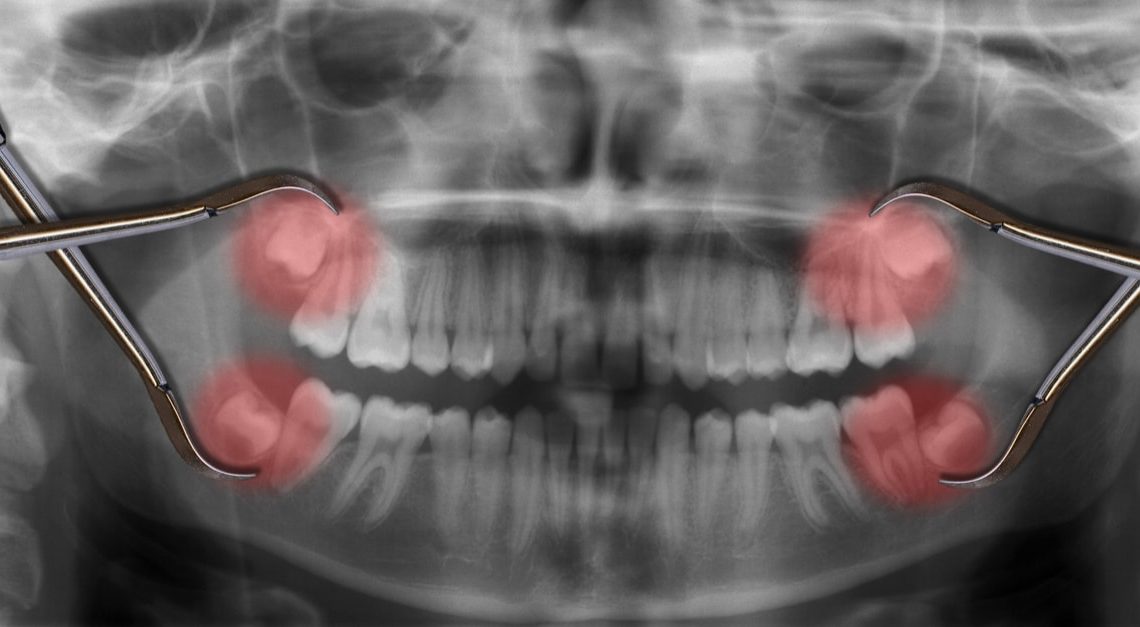Wisdom teeth are named this way because they come through at a more mature age.
Typically, that usually takes place between the ages of 17 and 21, but we have seen a lot of variation.
Wisdom teeth can lead to problems
Most people don’t have enough space in their mouth for wisdom teeth to erupt properly. Most common things to look out for are:
- pain or pressure
- cysts (seen on xrays) around the erupting teeth
- position of wisdom teeth (seen on xrays) – if erupting sideways, these teeth can damage the adjacent teeth
- partially erupted wisdom teeth – these are a problem because this allows bacteria to enter and cause a local infection, which can cause pain, swelling, and stiffness in your jaw
Why you may need your wisdom teeth removed
Every person is different, but most common issues that lead to the removal of these teeth are:
- pain
- infection
- cysts
- tumors
- damage to adjacent teeth – if the wisdom teeth are lying sideways in bone (very common), they can push on the neighbouring teeth and cause permanent damage, resulting in the need to extract the neighbouring teeth as well
- decay – if decay progresses, these teeth are very difficult to restore
- gum pockets where you can get food impaction, causing pain, swelling and difficulty in opening your mouth
When to see a dentist?
If you have a dentist you see regularly, they are already looking out for you and assessing you for potential issues.
However, if you haven’t seen a dentist in the last 6 months, you should definitely see one if you experience any symptoms at all. Even if you don’t, some wisdom teeth can quietly sit in the bone and cause problems that you may not even be aware of. So it becomes really important to have an xray to assess for potential problems before they cause damage or pain.


